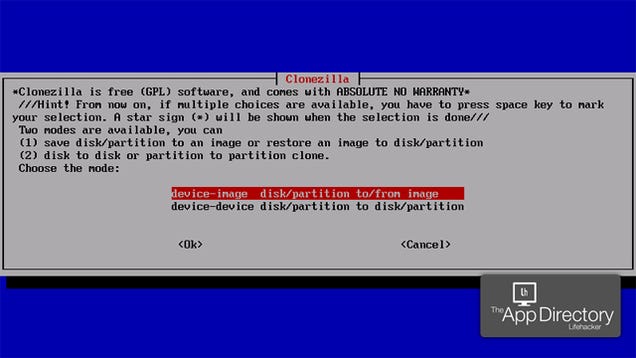Clonezilla Software Raid 0
What is Clonezilla? You're probably familiar with the popular proprietary commercial package Norton Ghost®. The problem with these kind of software packages is that it takes a lot of time to massively clone systems to many computers. You've probably also heard of Symantec's solution to this problem, Symantec Ghost Corporate Edition® with multicasting. Well, now there is an OpenSource clone system (OCS) solution called Clonezilla with unicasting and multicasting! Clonezilla, based on DRBL, Partclone and udpcast, allows you to do bare metal backup and recovery.


I am looking at modifying the backup capability of our servers. I inherited 4 servers running Windows Server 2003 and 1 server running Windows XP (yeah - go ahead and laugh.I am upgrading it to WinServer 2003 very quickly). All 5 servers are running RAID 0 with 2 SATA drives per server. I am looking. I have a 640gb Western Digital Black and a 750gb Western Digital black together in raid 0 through ICH10R controller on asus p6t deluxe v2. CloneZilla is truly free, and if my Intel Matrix arrays can be read in DOS by Ghost, they should be read just fine in the Linux Live OS used for CloneZilla..a. Software RAID/fake RAID is not supported by default. It's can be done manually only. Due to the image format limitation, the image. Book Duo 12TB dual-drive, USB3.0 high-speed premium RAID storage Model. WDBLWE0120JCH-NESN with fast shipping and top-rated customer. Clonezilla Software Raid Manual.
Two types of Clonezilla are available, Clonezilla live and Clonezilla SE (server edition). Hopper & Sons Manual Roll Bender. Clonezilla live is suitable for single machine backup and restore. While Clonezilla SE is for massive deployment, it can clone many (40 plus!) computers simultaneously.
Clonezilla saves and restores only used blocks in the harddisk. This increases the clone efficiency. At the NCHC's Classroom C, Clonezilla SE was used to clone 41 computers simultaneously. It took only about 10 minutes to clone a 5.6 GBytes system image to all 41 computers via multicasting! Features: • Free (GPL) Software.
• Filesystem supported: (1) ext2, ext3, ext4, reiserfs, reiser4, xfs, jfs of GNU/Linux, (2) FAT, NTFS of MS Windows, (3) HFS+ of Mac OS, (4) UFS of FreeBSD, NetBSD, and OpenBSD, and (5) VMFS of VMWare ESX. 163 06 Aggiornato Pdf Free. Therefore you can clone GNU/Linux, MS windows, Intel-based Mac OS, and FreeBSD, NetBSD, and OpenBSD, no matter it's 32-bit (x86) or 64-bit (x86-64) OS. For these file systems, only used blocks in partition are saved and restored. For unsupported file system, sector-to-sector copy is done by dd in Clonezilla. • LVM2 (LVM version 1 is not) under GNU/Linux is supported. • Grub (version 1 and version 2) is supported.
• Unattended mode is supported. Almost all steps can be done via commands and options. You can also use a lot of boot parameters to customize your own imaging and cloning. • Multicast is supported in Clonezilla SE, which is suitable for massively clone. You can also remotely use it to save or restore a bunch of computers if PXE and Wake-on-LAN are supported in your clients.
• The image file can be on local disk, ssh server, samba server, or NFS server. • Based on Partclone (default), Partimage (optional), ntfsclone (optional), or dd to image or clone a partition. However, Clonezilla, containing some other programs, can save and restore not only partitions, but also a whole disk. • By using another free software drbl-winroll, which is also developed by us, the hostname, group, and SID of cloned MS windows machine can be automatically changed. Minimum System Requirements for Clonezilla live: • X86 or x86-64 processor • 196 MB of system memory (RAM) • Boot device, e.g. CD/DVD Drive, USB port, PXE, or hard drive Limitations: • The destination partition must be equal or larger than the source one. • Differential/incremental backup is not implemented yet.